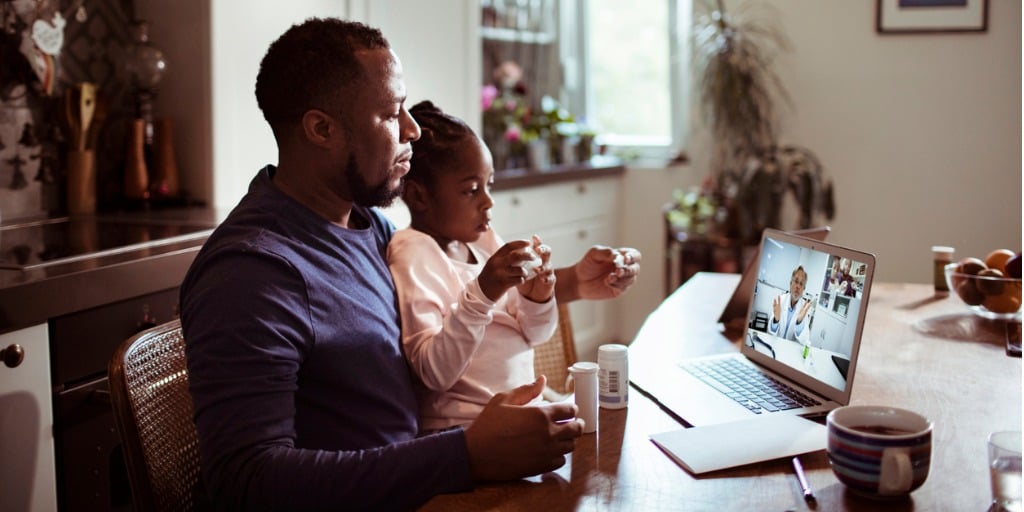5 things to help make the most of your virtual health care experience
Telemedicine, telehealth, e-visits, and virtual care are all ways to describe receiving care virtually without going to a provider’s office. And with the onslaught of COVID-19, it’s likely you’ll be offered one of these options if you need to see a doctor. Logging in or dialing into a virtual health visit, however, can be a new experience for many and may initially feel uncomfortable. These guidelines and tips can help you prepare for and enjoy a productive virtual health care experience.
1. Ensure your technology is ready to avoid day-of glitches
- You will need a smartphone, tablet or PC for a remote consultation along with a WIFI or cellular connection.
- Download and test the virtual visit platform you’ll be using on your computer or mobile device.
- You might even consider doing a practice call with someone at the office prior to your visit (although you might be given an opportunity to test the connection in advance or on the day of your appointment).
2. Prepare your environment for a successful connection and experience
- Avoid being on the go (don’t try to do the call while in the grocery store) and eliminate distractions (for example, family members, radio, television, or other sounds).
- Find a comfortable place where you can speak openly about your health.
- Sit at a desk or table with the camera at eye level and make sure your face is fully on camera.
- Avoid sitting with a window or light behind you as it might be difficult for your provider to see your face on screen.
- Arrange to have someone with you if you need help or if you typically have someone accompany you to your doctor’s visits.
3. Prepare for your visit like you would for an in-office visit, with a few small nuances
- Check your insurance as coverage for telemedicine varies by carrier. At the beginning of the pandemic many carriers, like AllWays Health Partners, announced they would waive copays for telemedicine.
- Write down your symptoms, making note of timing, when they started and if there is something that exacerbates them.
- Gather your medications or prepare a list with names and dosages (making note of those that might need refills).
- Jot down the questions you will ask the doctor.
- Have your latest medical records nearby, including a record of drug allergies, dates and types of surgeries, and past hospitalizations.
- Take your vital signs. If you have the proper equipment your provider may ask you to document your weight, temperature, blood pressure, and blood glucose, or even your resting pulse.
4. Get the most from your time with your provider once you are successfully connected
- Wear appropriate clothing for the type of visit you are having. If you are having a follow up surgical visit, be prepared to show your incision.
- With your notes as a reference, share your symptoms or changes in your health, key questions and concerns.
- Be prepared to show any physical signs of illness related to reason for your visit. Your provider may conduct some physical exam tests with you, or have you send pictures to review (for example, skin disorders).
- Ask your provider to explain test results, imaging reports or blood work.
- Review your medications and don’t forget to ask for prescription refills.
- If anything is not clear, ask the doctor to clarify so you understand your diagnosis or treatment plan.
- It’s important to recognize that your provider might still need to see you in-person for follow-up care, such as blood test, X-ray, or strep test.
- Ask your provider to send you a visit summary.
5. Expect the unexpected
- Be prepared to wait. It’s not much different from being in the office waiting room where your provider may run late with another patient.
- Ensure your doctor has a contact number for you in case there is an issue with your video connectivity.
Keeping these tips in mind can be beneficial, especially since experts predict that virtual medical care will become more commonplace than ever before.
Health plan members are also showing an affinity to telehealth, especially for follow-up care, according to a recent survey by AllWays Health Partners. Many providers are taking the lead in helping their patients along with written protocols and instructions for virtual visits. Our partner, Brigham Health, is just one example, with the tips they offer to prepare for a virtual visit during Covid.
While some individuals may consider holding off on doctors’ visits, you should not take a break from your health. It’s important to remember that your doctors are there to meet all of your health care needs, and that means you have options - whether it’s in-person or virtually.
